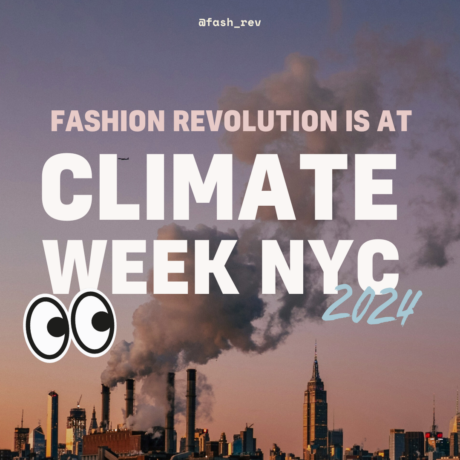Prisons in Cambodia: the garment industry
The garment industry in Cambodia moves a tremendous amount of money. Approximately $5.7billion in clothing and shoes were exported last year, [1] which accounts for as much as a 95% of all exports from Cambodia. Out of the 15 million inhabitants from Cambodia, the garment industry employs around 500,000 people, mostly women.
However, 90% of the owners and 80% of the managers in the garment factories are not Cambodians, but instead they are mostly Chinese, Taiwanese, Malaysian or South Korean.[2] Consequently, most of the revenue resides in a few foreign hands. Not only that, the rumors of corruption and government involvement to support factory owners are well spread out, and the police protection I could sometimes see at the gates of the factories accounts for it. We just need to take a quick look at the appearance of the factory building below, similar to a prison, with surveillance towers and barbed wire all around the walls. In order to visit the inside, special permits need to be issued, but they are very hard to obtain.
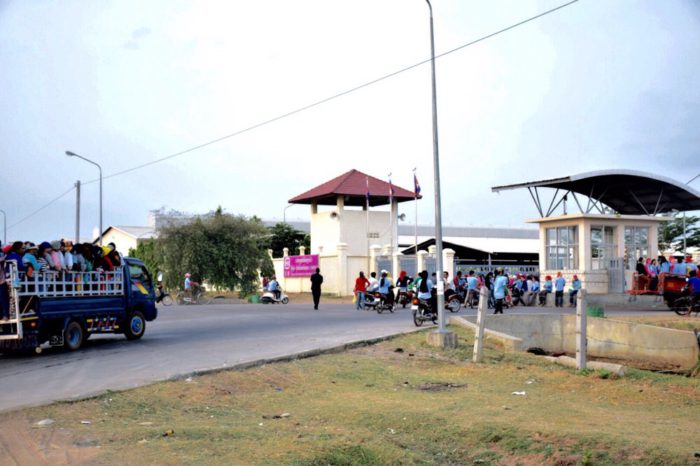
The media has already publicized the poor working conditions, but the problem became even more apparent after the protests in Phnom Penh (capital of Cambodia) in January 2014. The garment workers demanded a salary raise from the $80 (USD) to $160 per month, i.e. what workers claim as a living wage to cover basic needs (taking for granted that the worker lives with his/her family, since these wages are totally insufficient to pay a rent). [3] The police were armed in these peaceful protests and the protests ended up with four dead workers as a result of the police brutality. The salaries were increased to $100, far below the aforementioned living wage, and ridiculous if we consider the multi-million dollar profits of the Western brands that feed the system. Currently, around one year after the protests, the salaries can reach $120 (depending on the company), still insufficient when considering living costs in the country.
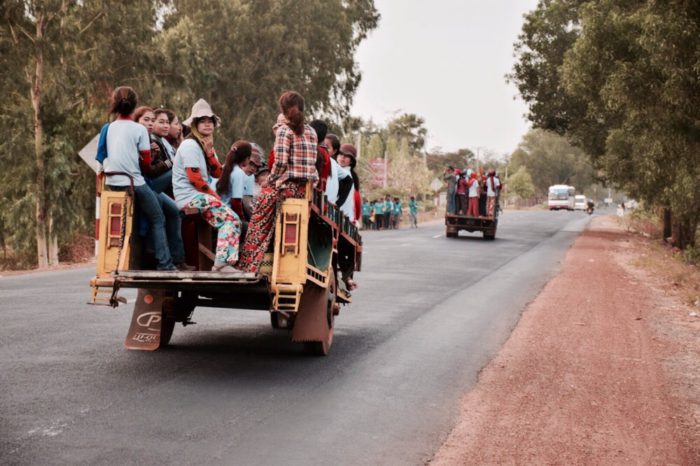
The protest in 2014 is not an isolated case: the previous year, in January 2013 there was a demonstration in which the workers asked their employer Kingsland (a Hong-Kong owned Phnom Penh based garment factory that supplies to Walmart and H&M), for the delayed salaries from September of the previous year 2012 4. That month of September, due to a decrease in the amount of workload, Kingsland asked its workers not to come to work with the promise of paying a 50% of their salaries during the off work period. However, the company was in bankruptcy and didn’t pay. All managers left or escaped the country – how could that be done without the aid of the government?-. It was not until March 2014 that Walmart and H&M agreed to pay a portion of (not all) of the debt to the workers.
GAP, Adidas, Hugo Boss, Nike – to name a few companies -, all participate in this assault against workers’ rights. It does not need to be on the front page of the newspapers every day. The data is available to whoever wants to know it. The existence of fair trade clothing brands is just the answer to a social issue and a matter of common sense. I want to believe that none of us would ever buy from these companies knowing what is really happening in these factories.
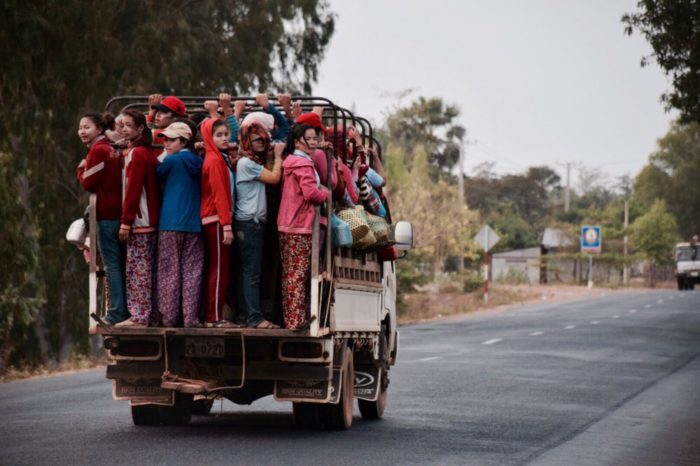
Here I summarize data not only from official sources (again, available on the internet and the provided links), but also from conversations with Cambodians that have worked, work at, or have friends that work in the garment factories:
Excessive overtime
Overtime is a common practice expected from the bosses, on top of the six days a week that garment workers go to the factories. Sometimes, workers need to work two shifts in a row when the production line requires so. Even though overtime is a normal practice in many developed countries, the office conditions are not quite the same. We are not talking about office work in a room with air conditioning here.
Office conditions
The environment in the factories is hot and toxic (and it gets worse during summer time) and deals with dangerous machinery. Even though accidents may not be frequent, they do happen. When they occur, from what I understood from more than one conversation with Cambodians, the managers hide the numbers and threaten their workers to not speak about the accidents.
Low salaries lead to malnutrition
It is a matter of basic math. Let’s take the common $100 monthly salary as the reference. The price of a meal at the food stands usually located at the doors of the factories varies from $0.75 to $1. The meal consists of rice, some vegetables, and a small piece of meat. That is, around $2.50 to $3 just for the three main meals of the day, and food that one would consider meager and of poor quality. In fact, malnutrition cases are frequent among the garment workers. That is, roughly $75 to $90 is the monthly amount required just to eat. Yet for expenses beyond food such as electricity, gasoline, and rent, they only have $10 – $25 left. Obviously, to live on a rent becomes impossible.
Fainting in the factories
Heat, suspended toxic particles in the air, lack or scarce ventilation, humidity, etc. All of that mixed together with malnutrition, has provoked many cases of fainting during working hours.
Most consumers look aside or are unaware of all of these issues when purchasing from one of the many brands that allow this to happen.
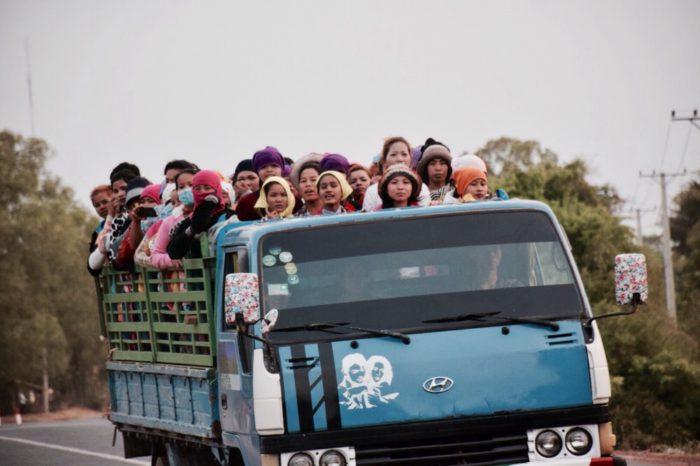
This is one of the dozens of trucks packed with people –yet treated like animals- who are driven to the factory, early morning, at 6am.
I wasn’t honored with a permit to enter any factory, but I could speak to some of the workers and workers’ friends. Among them, here below I expose the story of a girl who worked in a factory. She has asked me not to publish her name:
“I worked from July to September of 2014, during the summer holidays at university. The name of the factory is TaiEasy, located in Krakor district, Pursat province. I worked in the “product safety” department, verifying that the machines were in a good condition, but also doing administrative work. I earned $115 per month, and the company additionally provided us with 5kg of rice.
My schedule at work was from Monday to Saturday from 7am to 11:45am, and from 12:45pm to 4pm. However, except for Saturdays, we were asked to do overtime until 6pm or 9pm, depending on the day. And we would not get paid extra. What I could not understand is why the salary of my Vietnamese or Filipinoe colleagues was higher, even double or triple, than for us Cambodians. Most of the time it was us teaching them how to do their tasks when they came in as newcomers. And apart from the salaries, another difference between us Cambodians and the others were the holidays: Cambodians did not have any, just for the Khmer New Year and other national holidays. The other workers from other nationalities did have a few days of holidays, I can’t say how many days though.
My bosses were Chinese and Filipino. Especially the Chinese did not treat us Cambodians –not so much the others- very well. Even though they could not speak Khmer, they had learned a few pejorative ways to refer to us and to call our attention, always threatening us with getting fired when they thought we were too slow. Not only that but also we were only allowed to use the bathroom twice a day during working hours. I left the job when my summer holidays from university were over, but I still have friends working in the factories and the situation has not improved. “
This ex garment worker was back then studying to become an English teacher, and she is working as such now.
Governments from Western nations should be the ones making the move and drawing the border line, banning the import of all goods produced in countries were the workers’ rights and salaries do not reach a minimum or are not transparent. However, this does not happen and companies take advantage of it. For now, it is just in our hands to think twice what we buy, and what we support when buying it. It is a matter of common sense. Let’s not contribute. Let’s make a change.
References
1 http://thediplomat.com/2015/02/cambodias-garment-industryrollercoaster/
2 http://labourbehindthelabel.org/
3 As reference, a normal simple, insufficient- meal from a food stand in Cambodia costs around 1USD, i.e. 90USD a month, which is already the salary of many garment workers.
4 www.business-humanrights.org
Disclaimer: blogposts do not represent the views of Fashion Revolution




